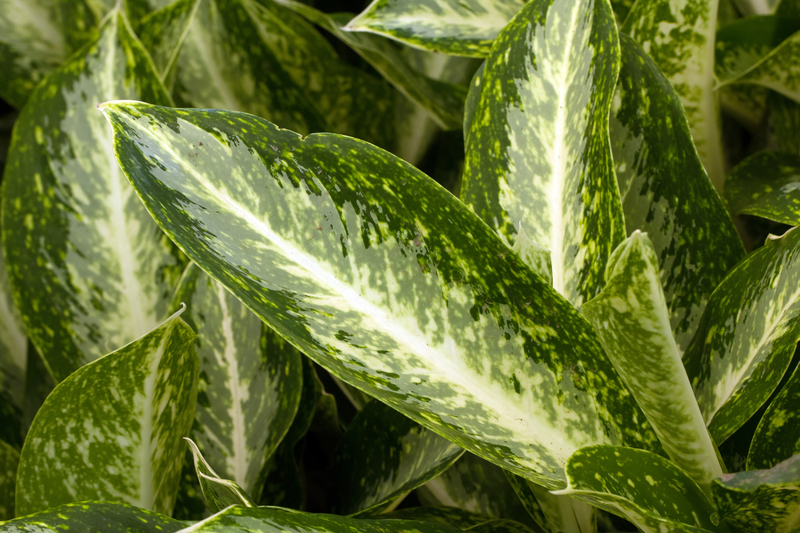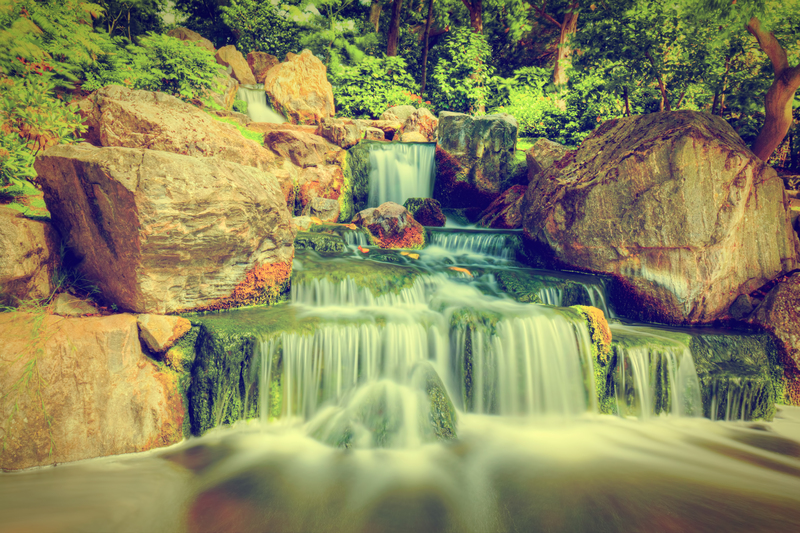Container gardening: Nature's magic in small spaces
Posted on 03/07/2025
Container Gardening: Nature's Magic in Small Spaces
Container gardening is more than just a trend; it is a lifestyle choice that brings the wonders of nature to balconies, patios, windowsills, and even small indoor corners. This innovative gardening style transforms urban environments and tight spaces into lush, green oases, showcasing nature's magic in small spaces.
What is Container Gardening?
Container gardening refers to growing plants exclusively in containers or pots instead of planting them directly in the ground. This method is incredibly versatile and has gained popularity worldwide due to its adaptability, creativity, and practicality. Regardless of space limitations, anyone can cultivate a thriving mini-garden using creative container designs and plant combinations.
Why Choose Container Gardening?
- Suitable for Small Spaces: Whether you have a modest balcony, a cluttered patio, or a small windowsill, container gardening makes it possible to grow plants anywhere.
- Mobility: Containers can easily be moved to follow sunlight or protect against adverse weather conditions.
- Pest and Disease Management: Growing plants in containers limits the spread of soil-borne pests and diseases.
- Accessibility: Container gardens are ideal for individuals with mobility challenges, as you can place them at any height.
- Versatility: You can cultivate vegetables, herbs, flowers, or even small trees using container gardening techniques.

The Benefits of Container Gardening: Bringing Nature's Magic Home
There is something truly enchanting about nurturing life in a small space. The magic of nature in containers is revealed through:
1. Stress Reduction and Enhanced Well-being
Research shows that spending time around plants lowers stress, enhances mood, and promotes mental clarity. Watching your container garden thrive can be endlessly satisfying.
2. Creativity and Design Flexibility
With container gardening, you become both gardener and designer. Mix and match colors, container types, and plant heights for personalized beauty in your home or yard.
3. Year-Round Gardening
Container gardening provides the opportunity to grow certain plants indoors all year, allowing you to enjoy fresh herbs and flowers even in winter months.
4. Urban Food Production
From tomatoes to strawberries and leafy greens, containers make it possible to harvest fresh produce even in high-rise apartments, contributing to a more sustainable lifestyle.
Getting Started: Essential Elements of Container Gardening
Setting up a container garden is straightforward, but deliberate planning ensures robust plant growth and lasting success. Follow these key steps for your own thriving garden in small spaces:
1. Selecting the Right Containers
- Materials: Choose from plastic, ceramic, terracotta, metal, or wooden containers. Consider weight, durability, heat retention, and aesthetics.
- Size: Match pot size to your chosen plants. Larger containers hold more soil, moisture, and nutrients, allowing more root growth.
- Drainage: Ensure all containers have drainage holes. Proper water drainage prevents root rot and keeps plants healthy.
2. Choosing the Best Soil
- Avoid using soil directly from your garden; it may be heavy and harbor pests.
- Opt for high-quality potting mix designed for containers, which balances moisture retention, nutrients, and drainage.
- For specialized plants like cacti or orchids, select a custom blend tailored to their needs.
3. Plant Selection Tips
- Consider Your Climate: Choose plant varieties suited to your local weather and the microclimate of your space (sun, shade, wind).
- Mix and Match: Create visual interest by grouping plants with contrasting colors, textures, and heights.
- Edibles and Ornamentals: Many gardeners combine flowering plants with culinary herbs or compact vegetables for function and beauty.
4. Essential Care and Maintenance
- Watering: Container plants dry out faster than those in the ground, so consistent watering is crucial, especially during hot months.
- Fertilizing: Use slow-release or liquid fertilizers to maintain healthy growth, since nutrients can be quickly depleted in smaller soil volumes.
- Pruning and Deadheading: Remove spent flowers and trim overgrown stems to encourage bushier, more productive growth.
Creative Container Ideas for Small Spaces
The possibilities for container gardening in small spaces are endless. Think outside the box--literally! Here are some innovative ideas:
1. Vertical Gardens
Install wall-mounted planters or use stacked pots to maximize vertical space. This is ideal for herbs, ferns, succulents, and trailing flowers.
2. Hanging Baskets
Hanging baskets create vibrant cascades of petunias, lobelia, strawberries, or cherry tomatoes. They add dimension and free up precious floor space.
3. Repurposed Containers
Transform old buckets, teacups, wooden crates, or even shoes into unique plant homes. Upcycling adds personality and sustainability to your garden design.
4. Window Boxes
Window boxes bring a riot of colors to otherwise bare window ledges. Try mixing edible flowers and herbs for a delightful culinary and visual experience.
5. Tabletop Mini Gardens
Use shallow trays or bonsai pots to create miniature landscapes for indoor or outdoor tables--perfect for succulents, cacti, and fairy gardens.
Best Plants for Container Gardens in Small Spaces
Not every plant is suited for life in a pot. For container gardening success, select compact, resilient varieties that thrive with limited root space.
Top Flowers for Container Displays
- Petunias: Bright, easy to grow, and bloom all season.
- Geraniums: Ideal for sunny spots, drought-tolerant.
- Impatiens: Perfect for shade lovers.
- Marigolds: Hardy, pest-repellent, and vibrant.
- Begonias: Compact, colorful, great for containers.
Herbs to Grow in Containers
- Basil
- Mint
- Thyme
- Chives
- Parsley
- Oregano
Vegetables for Limited Spaces
- Cherry Tomatoes: Most varieties do well in pots.
- Lettuce and Salad Greens: Quick, easy, and cuttable for continuous harvest.
- Radishes: Ideal for short growing cycles.
- Dwarf Peppers: Hot and sweet varieties available.
- Carrots: Choose round or baby varieties for containers.
Container Gardening Tips for Success
Maximize your container garden's beauty and bounty by keeping these tips in mind:
- Monitor Sun Exposure: Track how much sunlight your space receives and choose plants accordingly.
- Don't Crowd Containers: Give each plant enough room to grow and spread its roots for optimal health.
- Mulch Surface Soil: A layer of mulch helps retain moisture and suppresses weeds, even in pots.
- Rotate and Refresh: Move containers periodically for even growth, and periodically refresh potting soil to provide ongoing nutrients.
- Group Containers: Placing pots together can help conserve moisture and create eye-catching visual displays.
- Be Vigilant About Pests: Inspect plants regularly and treat any issues promptly with organic or chemical controls as preferred.
Eco-Friendly Container Gardening: Sustainable Choices
Container gardening is a wonderful way to support sustainability, benefit the environment, and connect with nature in small spaces. Make your gardening even greener by:
- Upcycling containers or using biodegradable pots instead of new plastic buckets.
- Harvesting rainwater for irrigation instead of relying on potable water.
- Making your own compost by recycling kitchen scraps to enrich your potting mix.
- Choosing native plants that require less water and attract beneficial pollinators.
Common Challenges and How to Overcome Them
While container gardening is generally straightforward, you may encounter some common hurdles. Here's how to address them:
1. Overwatering or Underwatering
Check soil moisture daily, especially in hot weather. Water deeply until you see it emerge from drain holes, but don't let pots sit in excess water.
2. Nutrient Deficiency
Maintain a regular fertilizing schedule to compensate for nutrients washed away with frequent watering.
3. Root Bound Plants
When roots circle around the edge of the pot, it's time to repot the plant into a larger container or divide the plant to promote healthy growth.
4. Winter Care
Bring sensitive containers indoors as the temperature drops, or wrap pots with insulation to protect roots from freezing.
The Therapeutic Joy of Container Gardening
Container gardening is more than just a practical solution for urban spaces--it's a source of daily inspiration and joy. Witnessing seedlings grow, savoring the scent of fresh herbs, and picking homegrown vegetables are all reminders of nature's magic in small spaces.
Many find solace and a sense of accomplishment in nurturing container gardens, making it an ideal hobby for easing stress and finding mindfulness in the daily routine.

Frequently Asked Questions (FAQs) About Container Gardening
How often should I water my container plants?
The frequency depends on the plant, container size, weather, and soil. In summer, you may need to water daily. Check soil moisture by inserting a finger one inch deep--if it feels dry, it's time to water.
Do container plants need fertilizer?
Yes. Because nutrients leach out of pots during watering, regular fertilizing with a balanced product is recommended--usually once every 2-4 weeks during active growth.
Can I grow fruit trees in containers?
Absolutely! Look for dwarf or patio varieties of apples, citrus, cherries, or figs. Choose large, sturdy containers and be prepared to prune roots every few years.
What are the best vegetables to grow for beginners?
Start with easy, quick-growing crops such as lettuce, radishes, spinach, cherry tomatoes, and bush beans.
Conclusion: Unlocking Nature's Magic with Container Gardening
Container gardening proves that anyone can experience nature's magic in small spaces. With the right strategies, a dose of creativity, and ongoing attention, even the tiniest nook can become an abundant, vibrant green retreat. Bring the outdoors into your home and embark on your own journey of discovery with this accessible, rewarding, and sustainable gardening practice today!

